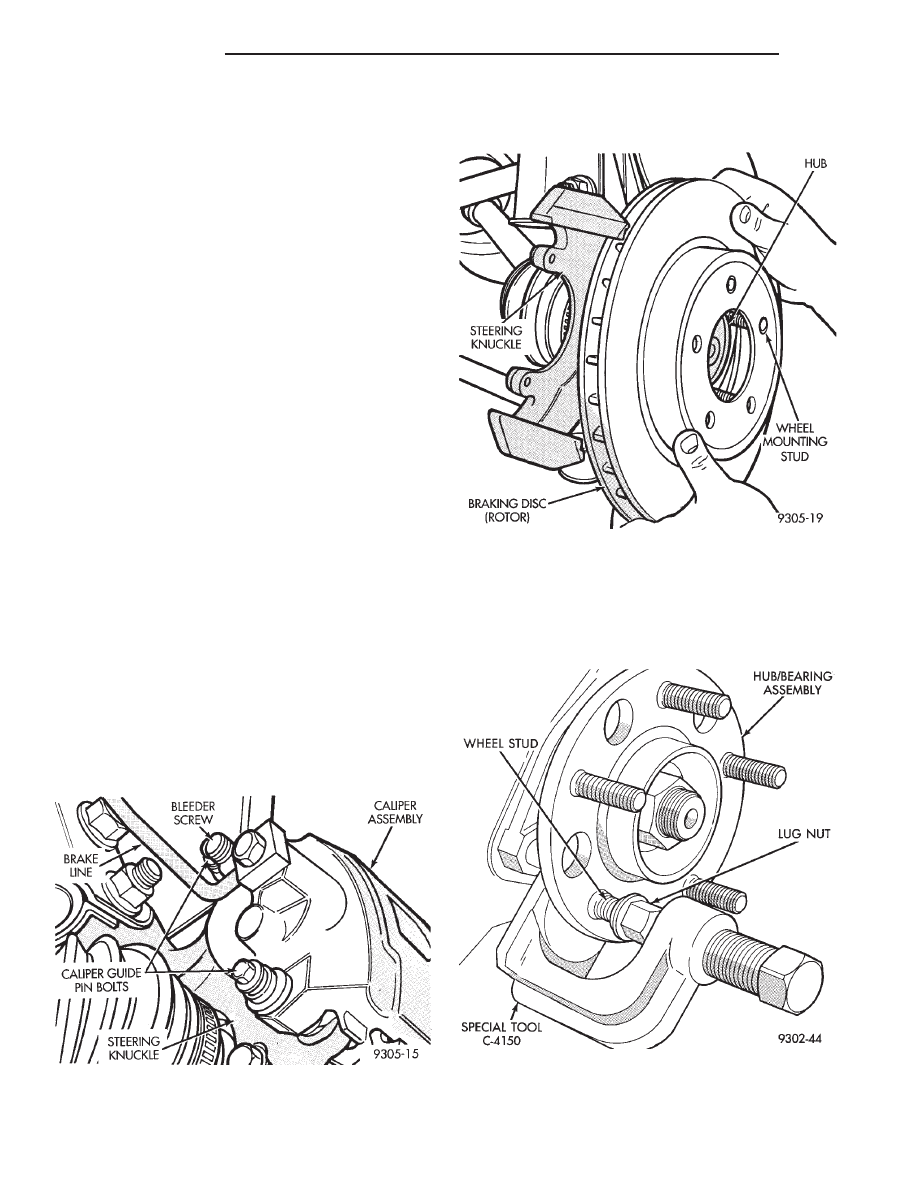Chrysler New Yorker. Manual - part 11

(16) Tighten the wheel mounting nuts in proper
sequence until all nuts are torqued to half specifica-
tion. Repeat the tightening sequence to the full spec-
ified torque of 129 N·m (95 ft. lbs.).
(17) Lower vehicle to the ground.
WHEEL MOUNTING STUDS
CAUTION: If a wheel attaching stud needs to be
replaced in the hub and bearing assembly the studs
CANNOT be hammered out of the hub flange. If a
stud is removed by hammering it out of the bearing
flange, damage to the hub and bearing assembly
will occur leading to premature bearing failure.
CAUTION: The following procedure and special
tools shown
MUST
be used when replacing wheel
attaching studs.
NOTE: The hub and bearing assembly does not
require
removal
from
the
steering
knuckle
to
replace wheel attaching studs in the hub and bear-
ing assembly.
REMOVE
(1) Raise vehicle on jackstands or centered on a
frame contact type hoist. See Hoisting in the Lubri-
cation and Maintenance section of this manual, for
the required lifting procedure to be used for this
vehicle.
(2) Remove the 2 guide pin bolts mounting the cal-
iper assembly to the steering knuckle (Fig. 61).
Remove the caliper from the front steering knuckle.
Refer to Disc Brake Caliper in the Removal And
Installation Section in the Brake Group of this ser-
vice manual for the caliper removal procedure.
(3) Remove rotor from hub by pulling it straight
off wheel mounting studs (Fig. 62).
(4) Install a lug nut on the wheel stud to be
removed from the hub and bearing assembly (Fig. 63)
so the threads on stud are even with end of lug nut.
Install Remover, Special Tool C-4150 on hub and
bearing assembly flange and wheel stud (Fig. 63).
Fig. 61 Caliper Mounting
Fig. 62 Removing Rotor
Fig. 63 Removing Wheel Stud From Hub And
Bearing
2 - 30
SUSPENSION
300M
REMOVAL AND INSTALLATION (Continued)